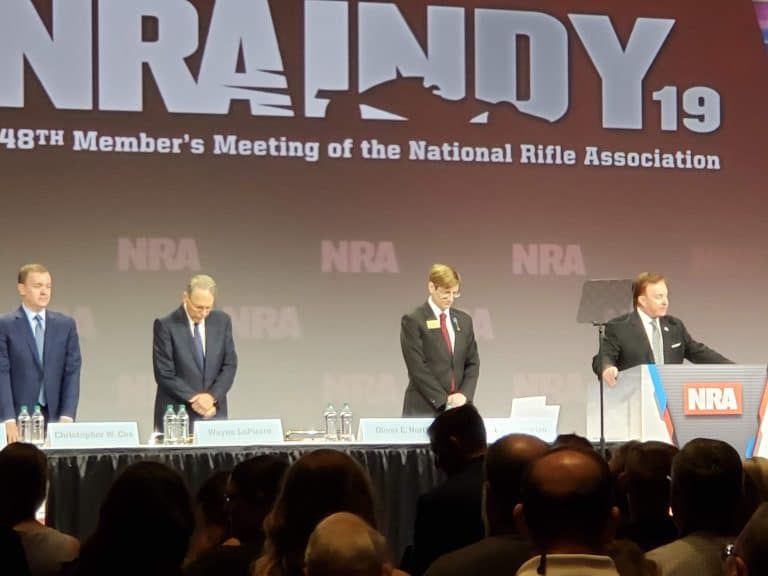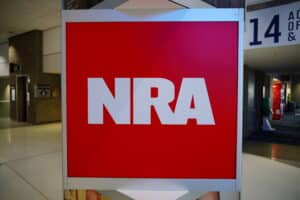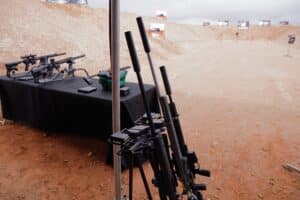Lawyers for the NRA broached a new argument in its dissolution case this week.
“Nowhere does the Amended Complaint allege that the purported looting and self-dealing allegedly engaged in by the individual defendants furthered the NRA’s business,” the NRA said in a filing. “Nowhere does the NYAG explain how the alleged false financial filings, which were not alleged to have been reviewed or approved by the Board, advanced the NRA’s business by omitting portions of director income.”
That’s the first time there has been space between CEO Wayne LaPierre, who is one of the individual defendants in the case, and the NRA as an organization. The NRA’s lawyers essentially argue that the allegations that LaPierre and other executives used NRA money to fund luxurious trips and shopping sprees for themselves or their family members don’t directly implicate the organization. So, even if the court finds the executives broke the law, it shouldn’t hold the NRA responsible.
In fact, the group goes further than that. The NRA’s filing argues that, if the allegations are true, the NRA itself is the actual victim in the case.
“Even if the allegations against current and former executives are taken as true (as they must be, for purposes of this Motion), the NRA and its Board would be the victims of the alleged wrongdoing—not perpetrators,” the group said in the filing. “Thus, no provision of New York law justifies punishing the NRA or its members.”
The NRA also argues New York Attorney General Letitia James (D.) undercut her claim it is to blame for the corruption its current and former executives are alleged to have committed. It said James accused former NRA Treasurer Woody Phillips and the other executives of hiding inappropriate spending and contract negotiations from the NRA Board, which indicates the organization couldn’t have approved of or benefited from the alleged misconduct.
“The misconduct of one defendant cannot be imputed to another defendant merely because of an existing business relationship,” it said in the filing. “Nor are allegations of misconduct against a member of an entity sufficient to state a claim against that entity. Nor can the NYAG get around this hurdle with vague, unsubstantiated allegations of ‘control’ of the Board by defendant LaPierre. Indeed, these allegations are contradicted by repeated statements in the Amended Complaint that the individual defendants took steps to conceal their misconduct from the Board and Audit Committee; testimony from Audit Committee officials that clearly underscores the repeated actions taken to remedy Phillips’ time as treasurer.”
That is a pretty remarkable argument to come from the lawyers for a group that LaPierre still runs. That’s especially true when you consider those lawyers are from Brewer Attorneys and Counselors. The firm’s head, William Brewer, has been the key legal advisor to LaPierre for the last several years. He’s the one who has been primarily responsible for guiding the NRA’s legal strategy, including LaPierre’s decision to unilaterally take the group into bankruptcy in a failed attempt to sidestep the New York case.
But it’s unlikely the NRA is preparing to throw LaPierre under the bus. There may actually be less going on than meets the eye here.
First, it’s important to note the NRA in no way agrees that LaPierre and the other executives did the things James has accused them of. Instead, it’s just saying that even if those things are true, they don’t necessarily implicate the organization as a whole, and they shouldn’t be used as a reason to dissolve it.
Second, the thrust of the filing sticks closely to the argument the NRA has been making all along. It argues that there were some irregularities and abuses by some executives and, especially, former top contractor Ackerman McQueen but the NRA has reformed its operations. It notes the federal bankruptcy judge who dismissed the NRA’s case complimented some of the group’s reforms in his ruling and argues it proves James wrong.
“Despite the benefit of a full investigation, multiple amendments, sweeping discovery in the NRA’s federal bankruptcy case, and a twelve-day trial in the federal bankruptcy court featuring twenty-three witnesses, the NYAG fails to allege any wrongdoing perpetrated or approved by the NRA’s Board sufficient to meet its burden to plead specific, non-conclusory allegations implicating a majority of the Board, or any decisions of the Board that are not subject to business judgment protection,” the group said in the filing. “The NYAG’s allegations are nothing but speculative, conclusory allegations about supposed misconduct by individual executives with no allegations against the majority of the NRA’s Board.”
The NRA filing also picks the attacks on James back up. It points out that she has been openly hostile towards the NRA, which she has labeled a “terrorist organization,” since before she even became attorney general. And it notes her attempt to shut down a group the size and scope of the NRA is unlike anything attempted before.
“The New York Attorney General (“NYAG”) seeks to dissolve a 150-year-old non-profit organization and to silence the constitutionally guaranteed political speech of its 5 million members based on conclusory allegations against two current, and two former NRA executives, and 5 unnamed Board members, with no allegations of complicity, acquiescence—or even knowledge—by the Board,” it said. “That the NYAG seeks draconian relief on such paltry grounds underscores that the motive of this lawsuit is to advance a political vendetta and not to achieve legitimate interests of the State, its people, the NRA or its 5 million members.”
Critics have repeatedly accused Brewer of putting LaPierre’s interests ahead of the NRA’s despite representing the organization. NRA member Fank Tait, who is trying to intervene in the case, has been vocal in criticizing the lawyer’s enormous fees and cozy relationship with LaPierre. The argument noting the difference between LaPierre, whose personal lawyer filed a separate motion to dismiss James’ charges, and the NRA shows Brewer is at the very least willing to do the due diligence in presenting valid counters to the charges against the group.
Still, it’s unlikely LaPierre’s power inside the NRA will wane anytime soon.
Given that LaPierre remains firmly in control of the NRA and has faced relatively little internal dissent from the current members of the NRA Board, it’s also difficult to see this argument persuading a judge. If LaPierre has victimized the NRA Board, the majority of them are in no hurry to reprimand him in any way, let alone force him out of his role. Perhaps the NRA’s lawyers can thread the needle in court, but there’s little appreciable distance between the group and its CEO in the real world.







2 Responses
“…there’s little appreciable distance between the group and its CEO in the real world.”
That one sentence captured the essence of the manifold problems facing the NRA. I believe there exists a vast chasm between majority of regular members, and especially former members who refuse to renew or have canceled their memberships, and the CEO. The Board’s refusal to excise the cancer at the headquarters dooms the organization far more than a specious suit by the NYAG ever could.
100% agree. Every day the board fails to take action to purge itself of the corrupt executive leadership is another day hundreds if not thousands of members become numb and disengaged from what was once a proud grassroots organization.